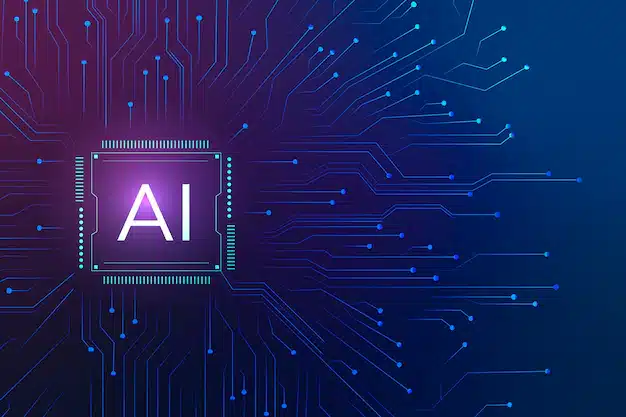The use of AI in various sectors to augment the natural abilities of man became a trend which prompted mixed reactions. People who embraced the change that came with the AI trend in Nigeria found their daily activities quite easy using AI resources like ChatGPT and its alternatives.
OpenAI is an AI research and deployment company with a mission to ensure that artificial intelligence benefits all humanity. To meet the high demand for AI resources, they have designed several ChatGPT alternatives that offer commendable features to humans.
In this article, we shall discuss 10 ChatGPT alternative platforms you can explore and how they work.
Table of Contents
10 ChatGPT Alternative Platforms You Should Know
-
GPT-3
GPT-3 had been developed way before ChatGPT. GPT-3 is a powerful natural language processing model developed by OpenAI. It’s a text-generating AI programme, with the ability to spurn out human-like text across a wide range of tasks and applications. It gives commendable results in answering language translation and lots more. Although having professional assistance is better for writing my papers, GPT can also generate a paper well if you can compose prompts effectively.
Moreover, it requires a small input text to generate large volumes of relevant and sophisticated machine-generated text. As a developer, you can use GPT-3 through OpenAI’s API to enhance conversational interfaces, content generation, and customer support systems.
-
GPT-4 (in development)
OpenAI’s GPT-4, which is still in development, has been anticipated to be the next breakthrough in natural language processing. The details of GPT-4 are still not certain, but it is hoped to turn out to be a significant tool for the next generation of AI-driven text generation.
With improvements in understanding context, and coherence, and generating nuanced responses, GPT-4 aims to revolutionize various industries, including healthcare, education, and content creation.
You don’t want to miss out on our premium insights. Subscribe to our YouTube channel today and stay tuned.
-
Codex
Codex is OpenAI’s programming assistant, built on the GPT-3 framework. It enables developers to write code in natural language, translating human-readable descriptions into functional code snippets. It supports multiple programming languages such as JavaScript, Go, Perl, PHP, Ruby, Swift TypeScript, and even Shell.
It is also the model that GitHub Copilot runs on. Considering the number of languages supported, Codex by ppenai is a valuable tool for accelerating software development processes making it a good alternative to ChatGPT.
-
DALL-E
DALL-E is openAI’s seat of visual creativity. DALL-E is one of the ChatGPT alternatives designed by OpenAI for generating images from textual descriptions. DALL-E indulges the principles of generative adversarial networks (GANs). It creates unique and imaginative visuals based on the instructional prompt.
This AI model boasts advanced techniques that help prevent generations of real individuals’ faces, including those of public figures. It also curbs misuse by not generating explicit adult, political, violent or other offensive content. From generating artwork to designing product prototypes, DALL-E offers creative solutions across all visual domains.
-
CLIP
CLIP is an acronym for Contrastive Language-Image Pre-training. CLIP is an AI model that learns visual concepts from natural language descriptions. Its intricate understanding of images based on textual descriptions alone as compared to other traditional image recognition systems positions it as an alternative to ChatGPT. Open AI’s CLIP has applications in image classification, visual search, and content recommendation systems.
-
OpenAI baselines
OpenAI baselines is an AI tool and a collection of high-quality implementations of reinforcement learning algorithms. This Chatgpt alternative is designed to be accessible and easy to use. Open AI’s baselines provide researchers and developers with a toolkit for experimenting and benchmarking reinforcement learning algorithms.
Baselines support a wide range of applications in robotics, gaming, and autonomous systems in both simple and complex simulations.
-
Spinning up
Open AI’s Spinning up is an educational resource developed by OpenAI to help individuals learn about deep reinforcement learning. It provides tutorials, code examples, and practical guidance for understanding and implementing reinforcement learning algorithms.
If you are a beginner or an experienced developer, you will find it interesting that spinning up offers valuable insights into the principles and applications of reinforcement learning.
-
OpenAI gym
OpenAI gym is a free Python toolkit developers use for developing and testing reinforcement learning algorithms. It provides a collection of environments for testing and benchmarking reinforcement learning agents, ranging from simple grid worlds to complex physics simulations.
With support for multiple programming languages and environments, OpenAI gym serves as a valuable resource for researchers and developers working in the field of reinforcement learning.
-
OpenAI microscope
An interface for examining and visualising neural networks’ internal representations is called an “OpenAI microscope.” It gives people access to the activations and characteristics that AI models have learnt, revealing how these models interpret and process data.
As an alternative to ChatGPT, the OpenAI microscope supports a variety of neural network topologies and assists researchers and developers in comprehending the inner workings of deep learning models.
-
API for OpenAI
Access to a variety of AI models created by OpenAI, such as GPT-3, Codex, and DALL-E, is possible through the OpenAI API. This Open AI creation provides an intuitive and scalable interface for incorporating AI features into programmes, websites, and other services.
Multiple programming languages and frameworks are supported by the OpenAI API, which enables developers to create notable AI-driven solutions for a variety of domains where they are needed.
Would you like to keep track of more tech insights like this? Simply subscribe to our newsletter today and let’s keep you posted.
Conclusion
Open AI offers a significant number of platforms and tools that serve as alternatives to Chatgpt. If you are interested in natural language processing, image generation, reinforcement learning, or AI-driven programming, Open AI has a ChatGPT alternative that will suit your needs. Utilizing these ChatGPT alternatives guarantees ease in your daily technical activities.
Edited by Priscilla Ajayi.
About Author
- Mercy is a writer at Insight.ng. She writes SEO content, and her articles are engaging, informative, and easy to read. Her interests span Lifestyle, traveling, career and Technology.
Latest entries



 TechnologyMay 7, 2024Nigeria’s Pioneering Role in Space Exploration: Advancements and Initiatives
TechnologyMay 7, 2024Nigeria’s Pioneering Role in Space Exploration: Advancements and Initiatives


1 comment
I’d add Google’s Gemini, and Microsoft’s Copilot.